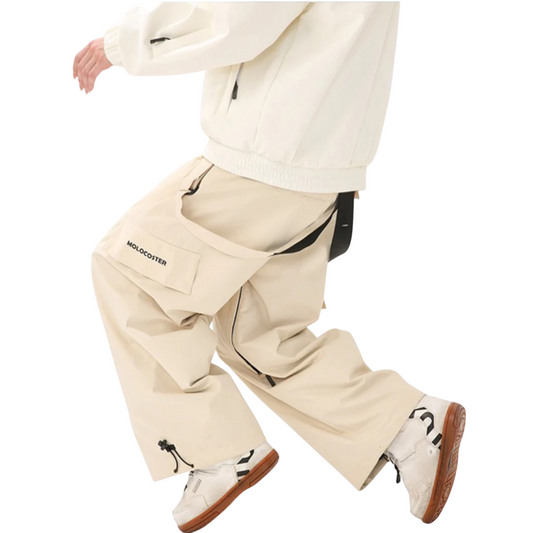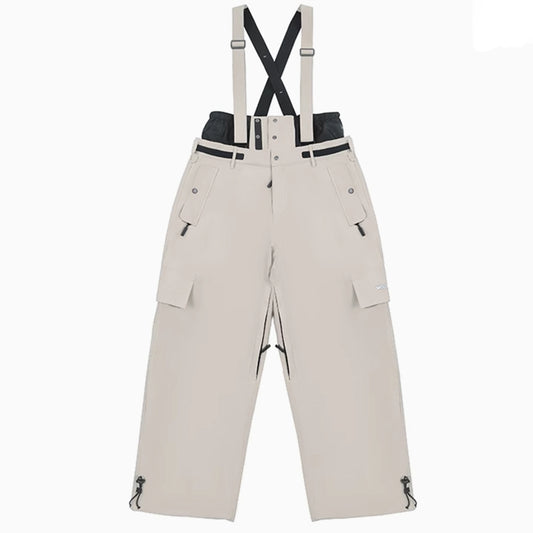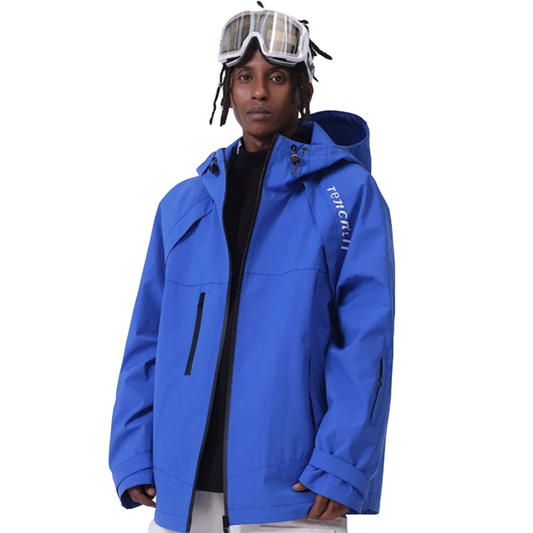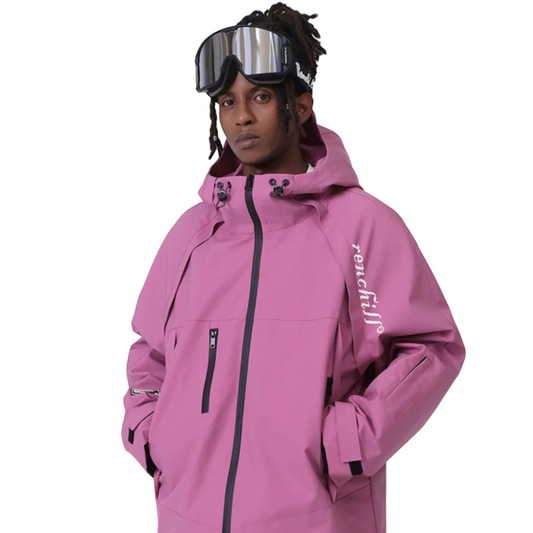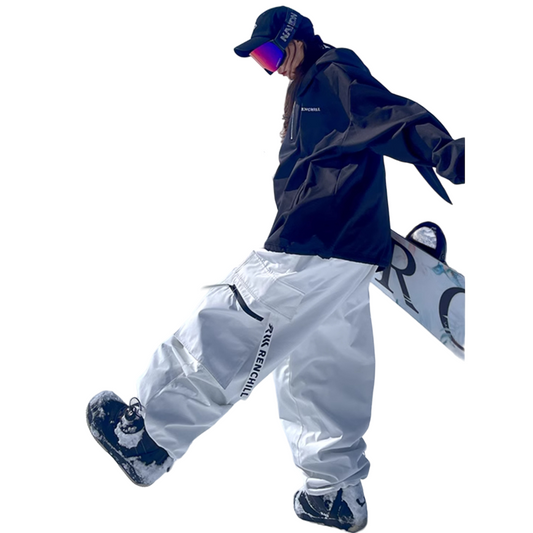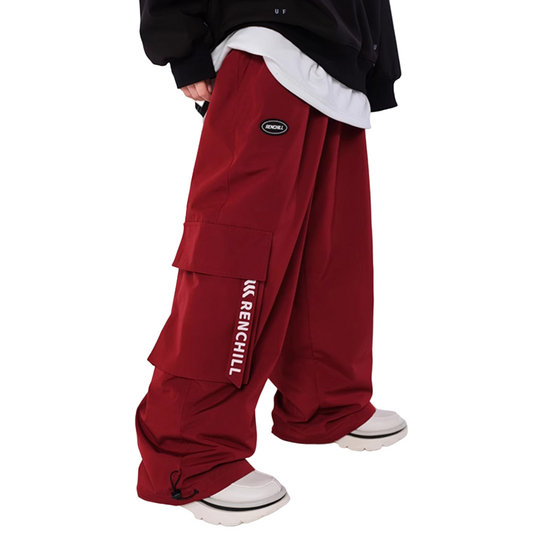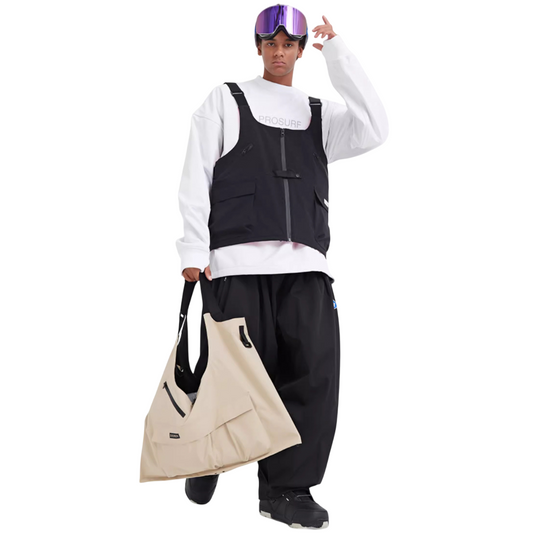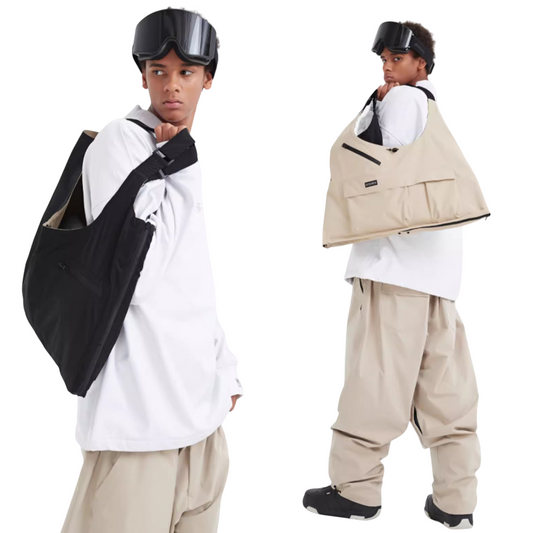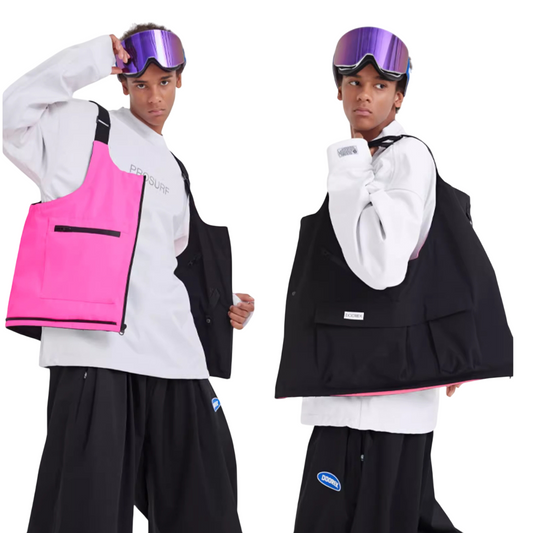You pay more for expensive vs cheap ski jacket because brands invest in premium materials, advanced construction, and high-performance features. Top ski jackets use technologies like Gore-Tex and Thinsulate, while budget options rely on basic synthetic fabrics. The price range for ski jackets stretches from $80 to $1,000+, with most snow jackets falling in the $80–$150 segment. Take a look at how prices and features break down:
|
Price Segment |
Price Range (USD) |
Typical Features |
Example Products |
|---|---|---|---|
|
Budget |
$80 - $150 |
Basic waterproofing, synthetic insulation |
Columbia Bugaboo II ($120) |
|
Mid-Range |
$150 - $300 |
Enhanced fabrics, pit zips |
REI Co-op First Chair GTX ($199) |
|
Premium |
$300 - $600 |
Advanced insulation, safety features |
Helly Hansen Alpha 4.0 ($450) |
|
Luxury |
$600+ |
Cutting-edge tech, tailored fit |
Arc’teryx Sabre ($650) |

You see extra value in an expensive vs a cheap ski jacket from better warranty, specialized design, and eco-friendly materials. When you shop SNOWMOCACA Ski Jacket, you get free shipping on all orders over $99. Before you choose, think about how often you ski, your style, and what matters most to you on the mountain.
Key Takeaways
- Expensive ski jackets use advanced materials and construction to keep you warmer, drier, and more comfortable than cheap jackets.
- High-end jackets offer better waterproofing, breathability, and durability, which means they last longer and perform well in tough weather.
- Look for features like fully taped seams, waterproof zippers, ventilation zips, and helmet-compatible hoods for the best protection and comfort.
- Choose a jacket that fits your skiing style and how often you ski; budget jackets work for occasional skiers, while frequent skiers benefit from premium options.
- Shop smart by buying off-season or used jackets, and care for your jacket properly to extend its life and maintain performance.
SNOWMOCACA Ski Jacket
Features
You want a ski jacket that keeps you warm, dry, and comfortable on the slopes. The SNOWMOCACA Ski Jacket stands out as a quality option in the world of ski jackets. It uses medium-weight synthetic insulation—60gsm in the body and 40gsm in the sleeves and hood—so you get warmth without feeling bulky. The bonded waterproof membrane has a 15,000 mm rating, which means you stay dry even in heavy snow. A PFAS-free Durable Water Repellent treatment adds extra protection against moisture. Fully taped seams and a zipless design help block out wind and water.
You will notice practical features that make your day on the mountain easier. The Storm Guard hood shields your head from snow and wind. Underarm vents let you cool off when you get too warm. Wrist gaiters keep snow out of your sleeves, and a microfleece chinguard prevents irritation. Multiple pockets give you space for your phone, snacks, and lift pass. These features put SNOWMOCACA ahead of most affordable jacket options, which often skip advanced waterproofing and seam sealing.
|
Jacket Model |
Price |
Insulation Type/Weight |
Waterproofing & Membrane |
Key Construction Features |
Additional Features |
|---|---|---|---|---|---|
|
SNOWMOCACA Ski Jacket |
$139 |
Synthetic: 60gsm body, 40gsm sleeves/hood |
15,000 mm membrane, PFAS-free DWR, fully taped seams, zipless |
Medium-weight insulation, fully taped seams |
Storm Guard hood, underarm vents, wrist gaiters, microfleece chinguard, multiple pockets |
|
Budget Jackets |
<$150 |
Basic synthetic or fleece |
Lower waterproof rating, fewer taped seams |
Simple, bulkier, fewer features |
May include 3-in-1 systems, fewer vents |
|
High-End Jackets |
$200+ |
Premium synthetic/down or shell only |
Gore-Tex, advanced breathability |
Multi-layer membranes, pit zips |
Lightweight, durable, advanced ventilation |
Value
You want the best value for your money when shopping for ski jackets. SNOWMOCACA offers a unique balance of affordability, quality, and style. You get insulated fabrics, adjustable fits, and reinforced seams that keep you comfortable and warm. The jacket’s breathable materials and thoughtful features make it a smart choice for both casual and frequent skiers.
Unlike luxury jackets that use high-end materials and cost much more, SNOWMOCACA gives you reliable performance at an affordable price. You do not have to sacrifice comfort or style. Free shipping on all orders over $99 adds even more value, making it easier for you to get a snow jacket that fits your needs.
You can find SNOWMOCACA jackets for men, women, and youth. If you want more tips on choosing the right snow gear, check out the related blog content at SNOWMOCACA News.
Tip: Choose a jacket with features that match your skiing style and local snow conditions. SNOWMOCACA offers options for every member of your family.
Expensive vs Cheap Ski Jacket: Materials
Fabrics
When you compare the fabrics in an expensive vs cheap ski jacket, you notice big differences in performance and comfort. High-end jackets often use advanced materials like Gore-Tex, Dermizax, Pertex, Thinsulate, Polartec, and Neoprene. These fabrics give you better waterproofing, breathability, flexibility, and durability. You stay dry and comfortable even in harsh weather.
- Gore-Tex stands out as a top choice for waterproof and breathable protection.
- Polartec fabrics add warmth and wick away sweat.
- Neoprene and Dermizax offer flexibility and extra weather resistance.
Cheaper jackets usually rely on basic polyester or nylon. These materials provide some waterproofing and insulation, but they do not match the advanced breathability or durability of premium fabrics. You may find features like taped seams and powder skirts in budget jackets, but the overall performance is limited. A field test showed that a $600 jacket with multiple Polartec fabrics outperformed a $50 budget jacket, especially in breathability and long-term durability. The budget jacket kept you warm and dry for a short time, but it could not handle tough conditions as well as the high-end option.
The type of fabric you choose affects how well your jacket protects you from snow and wind. Premium jackets often use three-layer fabrics for the best waterproofing. Cheaper jackets use in-house waterproof materials, which can vary in quality. Gore-Tex is a trusted name in expensive jackets, while budget options use less proven fabrics.
Eco-friendly fabrics are becoming more common. Some brands use recycled polyester and PFC-free waterproofing. These jackets perform as well as traditional ones and last a long time. You pay a bit more, but you support ethical manufacturing and help the environment.
Note: Advanced fabrics not only keep you dry but also let sweat escape, so you stay comfortable all day.
Insulation
Insulation plays a key role in how warm and comfortable you feel on the slopes. In an expensive vs cheap ski jacket, you see big differences in the type and quality of insulation. Most ski jackets use synthetic fill because it is affordable, breathable, and keeps you warm even when wet. High-end jackets use advanced synthetic fills that give you warmth without adding bulk. You move easily and stay comfortable.
Some expensive jackets use down insulation. Down is very warm and lightweight, but it costs more and loses its warmth if it gets wet. Synthetic insulation is more common because it works well in wet conditions and costs less. Budget jackets often use heavier, bulkier synthetic fill. These jackets keep you warm but may feel stiff and restrict your movement.
Shell jackets have no insulation. They are light and let you add layers underneath. This gives you more control over your warmth. Insulated jackets are heavier and less breathable, but they are great if you get cold easily or ski in very cold places.
Eco-friendly insulation is also available. Some jackets use recycled materials like PrimaLoft Black Eco. These options give you warmth and breathability while helping the planet. They cost a bit more, but you get a durable and responsible product.
|
Insulation Type |
Warmth |
Weight |
Price Range |
Best For |
|---|---|---|---|---|
|
Synthetic (basic) |
Good |
Heavy |
Low |
Budget, casual skiers |
|
Synthetic (advanced) |
Great |
Light |
Mid-High |
Frequent skiers |
|
Down |
Best |
Light |
High |
Cold, dry conditions |
|
None (Shell) |
None |
Light |
Varies |
Layering, active skiers |
Choosing the right insulation depends on your needs. If you want a jacket that balances warmth, weight, and price, advanced synthetic fill is a smart choice. If you want the lightest and warmest option, down is best, but it comes at a higher price.
Construction & Durability
Build Quality
When you look at ski jackets, you notice that build quality sets expensive and cheap options apart. High-end ski jackets use advanced construction methods. You often find 3-layer construction in these jackets. This means the outer fabric, waterproof membrane, and inner liner bond together. This design makes the jacket lighter, less bulky, and more breathable. You move easily and stay comfortable all day.
Budget ski jackets usually use a 2-layer construction. The outer fabric bonds to a waterproof membrane, but the liner hangs separately. This adds weight and bulk. You may feel less comfortable, especially if you ski for long hours. The fabric thickness, measured in denier (D), also matters. Resort jackets often use thicker fabrics (100D or more) for extra durability. Backcountry jackets use thinner fabrics (40D to 70D) to save weight.
You also see a big quality difference in waterproofing. High-end jackets use premium membranes like Gore-Tex and advanced seam sealing. All seams get sealed or even welded, which blocks water from getting in. Budget jackets often seal only the most important seams, like those on the hood, neck, and shoulders. This can let water seep in through other areas.
Here are some key build quality features you find in high-end jackets:
- 3-layer construction for better protection and comfort
- Fully taped or welded seams to prevent leaks
- Waterproof zippers that keep water out
- Durable Water Repellent (DWR) coatings for extra water resistance
Budget jackets may use:
- 2-layer construction with a separate liner
- Critically taped seams (only key areas sealed)
- Standard zippers that can let water in
- DWR coatings that wear off faster
Tip: Always check the seam sealing and zipper type before you buy a ski jacket. These features make a big difference in how dry you stay.
Longevity
You want your ski jacket to last for many seasons. The way a jacket is built affects how long it will protect you from snow, wind, and rain. High-end jackets use better materials and construction methods, so they last longer. The fabric resists tears and abrasions. The waterproof membrane stays strong, even after many washes.
Budget jackets may feel sturdy at first, but they often wear out faster. The fabric can absorb moisture and break down over time. DWR coatings on budget jackets wear off quickly, so you need to reapply them often. Seams and zippers are common points of failure. If a jacket uses only critically taped seams or standard zippers, water can get in and cause damage.
The table below shows how common failure points differ between budget and premium jackets:
|
Point of Failure |
Description |
Budget Jackets |
Premium Jackets |
|---|---|---|---|
|
Seams |
Water can seep through gaps; sealing prevents leaks |
Critically taped (only key areas sealed) |
Fully taped or welded (all seams sealed) |
|
Zippers |
Standard zippers allow water in; waterproof zippers block water |
Standard zippers |
Waterproof zippers |
|
Layering Construction |
Affects durability and protection |
2-layer or 2.5-layer |
3-layer, better bonded protection |
If you ski often or in tough weather, a high-end jacket gives you better long-term value. You spend more at first, but you avoid replacing your jacket every season. If you ski only a few times a year, a budget jacket may work, but you should expect to replace it sooner.
Note: Take care of your jacket by washing it as recommended and reapplying DWR. This helps any jacket last longer, no matter the price.
Performance in Ski Jackets
Waterproofing
Waterproof protection is one of the most important factors when you choose a ski jacket. You want a jacket that keeps you dry in heavy snow and wet conditions. Many expensive jackets use advanced waterproof membranes like GORE-TEX, which block water while staying lightweight. Cheaper jackets often use proprietary or basic membranes, but some still offer strong waterproof performance.
Here is a table comparing waterproofing technologies in popular ski jackets:
|
Jacket Model |
Price Range |
Waterproofing Technology |
Construction |
Notes on Waterproofing Performance |
|---|---|---|---|---|
|
Patagonia Untracked |
$700 |
3L GORE-TEX ePE (PFAS-free) |
3-layer |
Uses sustainable GORE-TEX ePE membrane with no compromise on waterproofing; durable and lightweight; industry-leading tech |
|
Patagonia Storm Shift |
$499 |
2L GORE-TEX ePE (PFAS-free) |
2-layer |
Provides GORE-TEX protection at a lower price; slightly heavier due to fleece lining; good waterproofing with sustainability focus |
|
Trew Gear Cosmic Primo |
~$450 |
Proprietary waterproof membrane |
Not specified |
Offers similar waterproofing performance to higher-priced jackets, indicating accessibility of high-end waterproofing tech |
|
Flylow Quantum Pro |
~$450 |
Proprietary waterproof membrane |
Not specified |
Comparable waterproofing to expensive jackets, supporting that price does not always reflect waterproofing quality |
You see that both expensive and budget jackets can deliver strong waterproof protection. The main differences come from construction, weight, and sustainability features. You should look for a jacket with fully taped seams and a reliable waterproof membrane to perform great on the slopes.
Breathability
Breathability helps you stay comfortable while skiing. When you move and sweat, you want moisture to escape from your jacket. High-end ski jackets often have breathability ratings around 40,000 g/m²/24h, which means they let a lot of vapor out. Budget jackets may not list breathability ratings, so you might notice less comfort during active skiing.
- High-end jackets use advanced fabrics like Dry Q Elite and Gore-Tex, which allow moisture vapor to escape quickly.
- Budget jackets may trap heat and sweat, making you feel damp or overheated.
- Breathability matters more than waterproofness for comfort, especially when you ski hard or layer clothing.
- Some jackets use stretch fabrics for better comfort, but this can reduce waterproof durability.
- Openings like vents and zippers also help manage moisture and heat.
You should choose a jacket with good breathability if you want to maximize ski performance and stay dry inside your jacket.
Fit
Fit affects how well your ski jacket moves with you and keeps you warm. Expensive jackets like the Arc'teryx Sentinel use tailored designs with articulated elbows and roomy shoulders. These features let you move freely without pinching or pulling. You get a tapered waist for warmth and comfort. Cheaper jackets often have a baggy fit, which can let cold air in and make layering harder.
Some budget jackets use stretchy materials to improve mobility, but they may not match the tailored fit of high-end options. A good fit helps you perform great on the slopes, keeps you warm, and prevents discomfort. You should try on different jackets to find one that matches your body shape and skiing style.
Tip: Look for articulated sleeves and adjustable hems to get the best fit and ski performance.
Expensive Jacket Features
Technical Details
You notice that an expensive jacket often stands out because of its advanced technical features. High-priced snow jackets use waterproof and breathable materials like HELLY TECH® or Gore-Tex. These fabrics keep water out but let sweat escape, so you stay dry and comfortable. Many super expensive jacket models include fully taped seams and waterproof zippers. These details stop snow and rain from getting inside. You also find helmet-compatible hoods that fit over your helmet without leaving gaps. Adjustable cuffs and powder skirts block cold air and snow, helping you stay warm. Some jackets have ventilation zips under the arms. You can open these to cool down when you get too hot.
|
Feature |
Benefit |
|---|---|
|
Waterproof membrane |
Keeps you dry in wet snow |
|
Breathable fabric |
Prevents sweat buildup |
|
Taped seams |
Stops leaks at stitching |
|
Ventilation zips |
Controls body temperature |
|
Helmet-compatible hood |
Fits over a ski helmet |
Comfort
You want to feel good all day on the slopes. An expensive jacket uses soft linings and ergonomic designs to boost comfort. Super expensive jacket brands add features like microfleece chinguards, stretch panels, and articulated sleeves. These help you move freely and avoid chafing. Adjustable hems and cuffs let you fine-tune the fit. You can ski, bend, and reach without feeling restricted. High-end ski jacket models often use lightweight insulation that keeps you warm without adding bulk. You stay cozy, but you do not overheat or feel weighed down.
Tip: Look for jackets with adjustable features and soft linings. These small details make a big difference in how comfortable you feel during long ski days.
Safety
Safety matters when you ski in tough conditions. Expensive jacket designs often include features that protect you from injury and help rescuers find you in an emergency. Many high-priced snow jackets have RECCO reflectors sewn into the fabric. These reflectors help rescue teams locate you if you get caught in an avalanche. Some jackets work with back protectors that use certified foam panels to absorb impact and protect your spine. You also see helmet-compatible hoods and wrist gaiters that keep snow out and protect your body. Experts recommend using back protectors and helmets together for the best safety. Jackets with these features help reduce injury risks and keep you safer on the mountain.
- RECCO reflectors for avalanche rescue
- Back protector compatibility for spine safety
- Helmet-compatible hoods for head protection
- Adjustable cuffs and powder skirts to block snow and cold
You get peace of mind knowing your jacket helps protect you in many ways.
Style & Trends in Ski Jackets
Modern Styles
You see modern ski jackets blending fashion with high-tech performance. Brands use advanced materials that keep you dry and warm, such as waterproof fabrics and synthetic insulation. Many jackets now feature smart designs, like modular layers and all-season use. You can find jackets with GPS tracking, AI-assisted layering, and even biodegradable insulation. These innovations help you stay comfortable and safe on the slopes.
- You notice that mid-range jackets, priced between $101 and $300, are popular because they balance quality, features, and affordability.
- Many people pay more for jackets that offer both style and top performance, especially if the jacket comes from a trusted brand.
- Eco-friendly jackets are trending, with more brands using recycled materials and sustainable production methods.
- You find that men’s jackets focus on durability and technical features, while women’s jackets often combine style with function. Parents look for safety and warmth in kids’ jackets.
Note: Modern ski jackets often cost more because they use specialized materials and technology. You pay for features like breathability, waterproofing, and insulation, which improve your experience on the mountain.
Vintage & Retro
Vintage and retro ski jackets, especially those from the '90s, stand out with bold colors, three-quarter zips, and large kangaroo pockets. You might love the nostalgic look, but these older jackets often lack the weather protection and features you need today. They usually do not have full waterproofing or secure enough pockets.
Modern jackets inspired by retro styles give you the best of both worlds. You get the classic look with bright colors and unique designs, while also enjoying advanced materials and features. For example, new anoraks use waterproof fabrics, synthetic insulation like Primaloft Gold Aerogel, and multiple zippered pockets. They add pit venting and longer backs for better coverage.
|
Style |
Typical Price |
Key Features |
Performance |
|---|---|---|---|
|
Vintage/Retro |
Lower |
Bold colors, simple design, limited waterproofing |
Basic |
|
Modern Retro |
$269–$799 |
Waterproof, insulated, vented, secure pockets |
High |
You see that modern retro jackets outperform vintage ones in every way. Expert skiers recommend them for their comfort and protection. The blend of nostalgia and technology makes these jackets a smart choice if you want style and performance.
Value for Money
Cost vs Benefit
You want to get the most out of every dollar you spend on a ski jacket. The price gap between budget and high-end jackets can be huge, but the benefits often match the cost. Budget jackets work well for casual skiers who face mild weather. You get basic warmth and protection, but you miss out on advanced features. High-end jackets offer better waterproofing, breathability, and fit. You stay dry and comfortable even in harsh conditions. These jackets include extras like helmet-compatible hoods, large pockets, powder skirts, and ventilation zips. You pay more, but you gain more comfort and performance.
|
Jacket Type |
Cost |
Key Benefits |
Limitations |
|---|---|---|---|
|
Budget |
$50-$150 |
Warmth, basic protection |
Poor waterproofing, few features |
|
High-End |
$400-$1000 |
Superior waterproofing, ventilation |
Higher cost |
Tip: If you ski often or in tough weather, a high-end jacket gives you better value over time.
When to Invest
You should think about your skiing habits before you spend more. Ask yourself how often you ski and what kind of weather you face. Here are some points to help you decide:
- You ski only a few times each season in cold, dry weather. A budget jacket keeps you warm and saves money.
- You ski in mild conditions and do not need advanced features. You can choose a basic model.
- You ski often or in wet, changing weather. A high-end jacket protects you from rain and snow.
- You want features like helmet-compatible hoods, big pockets, and ventilation. High-end jackets offer these extras.
- You care about durability and comfort during long days on the mountain. High-end jackets last longer and feel better.
- You ski hard and need to manage sweat and heat. High-end jackets breathe well and keep you dry.
You make the best investment when you match your jacket to your needs. If you ski often or want top performance, a high-end jacket pays off. If you ski rarely or in easy conditions, a budget jacket does the job.
Shopping Tips
Off-Season Deals
You can save a lot of money if you shop for ski jackets at the right time. Stores offer the biggest discounts after the ski season ends, usually in February and March. Retailers clear out old inventory to make room for new styles. You also find great deals during major sale events like Black Friday and Cyber Monday. Summer is another smart time to look for discounted ski gear. Many online shops, including Patagonia, REI, and EVO, run sales after the holidays. If you stay flexible with color and style, you can get quality jackets for much less.
- Shop after the ski season (February–March) for clearance sales.
- Check Black Friday and Cyber Monday for deep discounts.
- Look for summer sales on ski gear.
- Watch for post-holiday sales at major retailers.
- Consider last year’s styles for bigger savings.
Tip: You can often buy a high-quality jacket at a fraction of its original price if you shop off-season.
Used Jackets
You might find excellent value by buying a used ski jacket. Many skiers upgrade their gear often, so you can pick up jackets in great condition. Check local outdoor shops, online marketplaces, and ski swaps. Inspect the jacket for wear, stains, and working zippers. Make sure the waterproof coating still works by spraying water on the fabric. Used jackets let you try premium brands without paying full price. You help the environment by reusing gear and reducing waste.
|
Where to Buy Used |
What to Check |
Why Buy Used |
|---|---|---|
|
Local shops |
Seams, zippers, DWR |
Save money |
|
Online markets |
Stains, fit, age |
Try premium brands |
|
Ski swaps |
Overall condition |
Reduce waste |
Care & Washing
You keep your ski jacket working well by following proper care steps. Regular cleaning removes dirt and oils that block breathability and waterproofing. Always check the care label before washing. Use specialized detergents like Nikwax Tech Wash for synthetic jackets or Down Wash Direct for down insulation. Wash your jacket inside out, close all zippers and Velcro, and use a gentle cycle at 30°C. Avoid fabric softeners and harsh detergents. Dry your jacket on low heat if allowed, or air dry in a shaded area. For down jackets, add tennis balls to the dryer to fluff the insulation. Reapply waterproofing treatments every 4–5 washes to keep water resistance strong.
- Check the care label for washing instructions.
- Use specialized detergents for ski gear.
- Wash inside out, close fasteners, and use gentle cycles.
- Dry on low heat or air dry away from sunlight.
- Reapply waterproofing regularly.
- Spot clean stains and inspect for damage before washing.
Note: Proper care helps your jacket last longer and perform better every season.
When you compare an expensive vs a cheap ski jacket, you see that frequent skiers benefit from higher-quality jackets with better warmth, durability, and comfort. Occasional skiers can choose affordable options that still protect against snow and cold. Key features like insulation, breathability, and fit matter most. Satisfaction ratings show that premium jackets offer top durability, while budget jackets still provide solid value.
|
Price Category |
Satisfaction/Durability Rating |
|---|---|
|
Expensive |
95–98% |
|
Mid-range |
95% |
|
Budget |
90% |

You can balance budget, performance, and style by choosing a jacket that matches your skiing habits. SNOWMOCACA Ski Jacket offers great value and free shipping on orders over $99. For more tips, explore related blog posts and compare your options before you buy.
FAQ
What makes an expensive ski jacket worth the price?
You pay more for advanced materials, better waterproofing, and extra features. Expensive jackets last longer and keep you comfortable in harsh weather. You also get a better fit and more safety options.
How do you know if a ski jacket fits well?
You should move your arms freely without tightness. The sleeves should cover your wrists. The hem should reach your hips. Try layering underneath to check comfort.
Can you wash a ski jacket in a washing machine?
Yes, you can wash most ski jackets in a machine. Use a gentle cycle and special detergent for outdoor gear. Always close zippers and follow the care label.
Tip: Reapply a waterproofing spray after washing to keep your jacket performing well.
What features should you look for in a ski jacket?
|
Feature |
Why It Matters |
|---|---|
|
Waterproofing |
Keeps you dry |
|
Breathability |
Prevents overheating |
|
Vents |
Controls body heat |
|
Pockets |
Stores essentials |
|
Adjustable Hood |
Fits over a helmet |
Are budget ski jackets good for beginners?
You can start with a budget jacket if you ski a few times each year. These jackets offer basic warmth and protection. Upgrade to a higher-quality jacket if you ski often or in tough weather.











